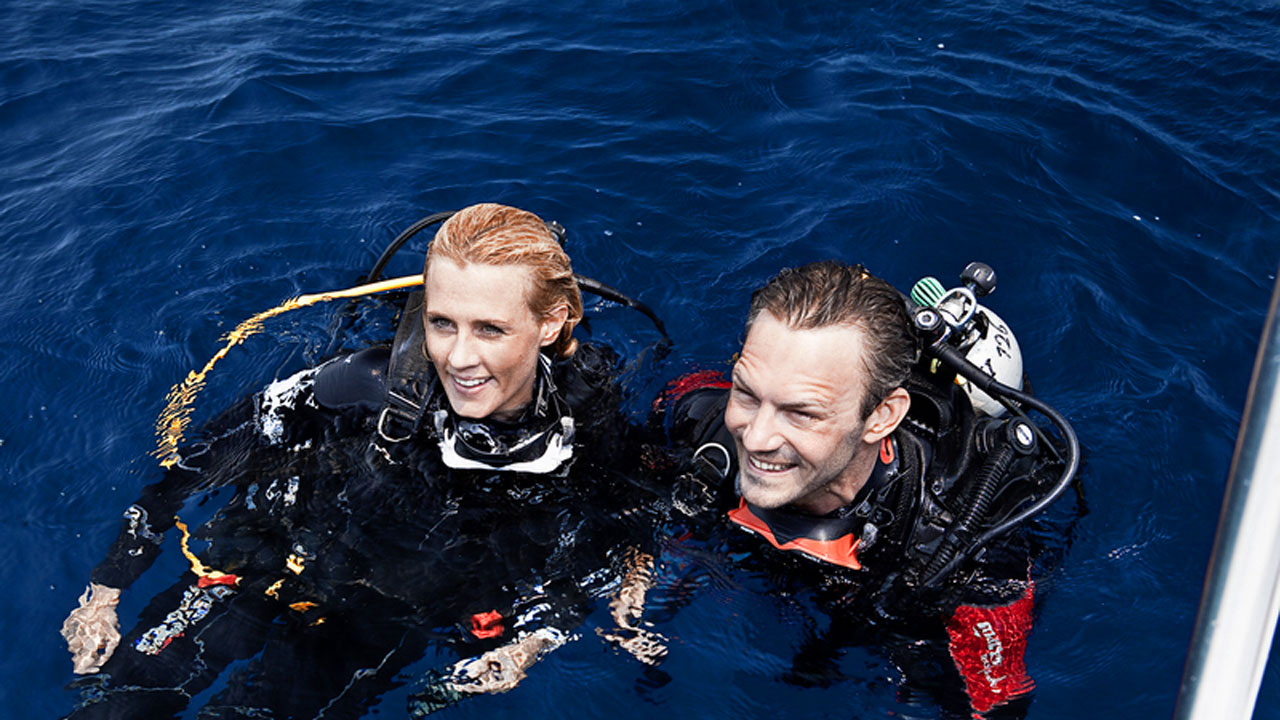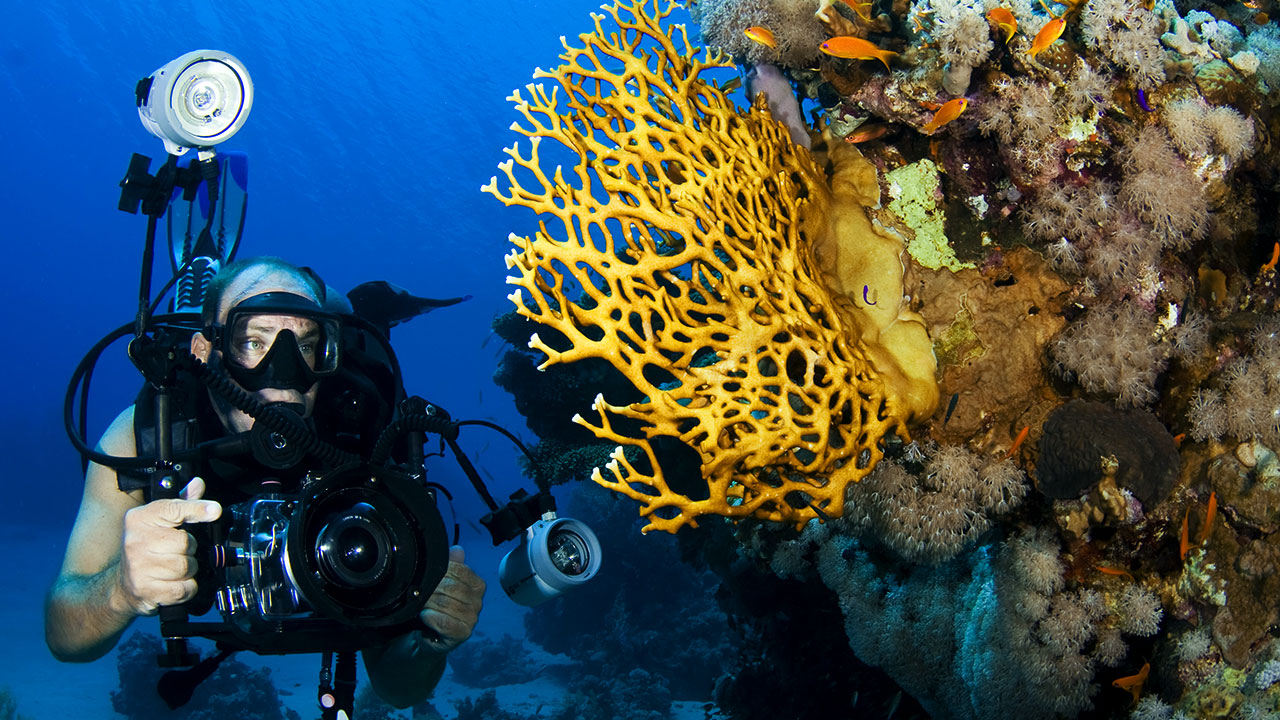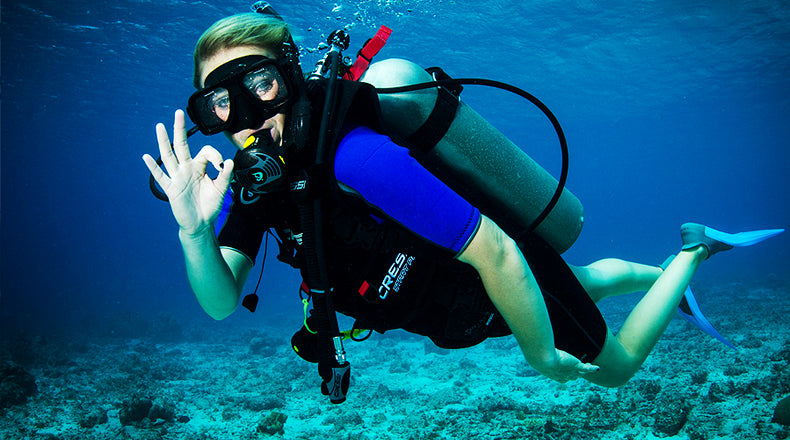What Are the Different Kinds of Gas Mixes for Scuba

Many non-divers mistakenly think that scuba cylinders are filled with pure oxygen. In reality, most divers use natural air (filtered and dehumidified) to breathe underwater. There are also a few other gas mixtures and gasses than can be used for scuba. So, let’s take a look at what those are and why one might need to use them.
Air
As it’s already been mentioned, atmospheric air is the most common diving gas mix. It normally consists of approximately 21% oxygen, 78% nitrogen and 1% other trace gases, primarily argon. To simplify the calculations this last 1% is usually treated as if it were nitrogen. The main benefits of using air for diving are that it’s cheap and easy to work with. However, the nitrogen component of it causes nitrogen narcosis, which is why it has a safe depth limit of about 40 meters (130 feet). If you go beyond 58 meters (190 feet), where the pO2 rises to 1.4 ATA, oxygen will also become toxic, causing sensory distortions and seizures. For this reason, the maximum operating depth of air is 66.2 meters (218 feet).
But what if the divers need to go deeper or stay underwater longer than it is possible when breathing air? That’s where all the different alternative gas blends come into play.
Nitrox
Nitrox is the second most commonly used gas in diving after air. It is different from air in that it simply has higher levels of oxygen. Nitrox can contain from 22 to 40 percent oxygen. The most common mixes are 32 and 36 percent oxygen, also known as EAN32 and EAN36. Reduced nitrogen loading allows divers to stay underwater longer, however, because of the increased levels of oxygen they cannot dive as deep as they would be able to with air.
Due to such nature of this gas mix, Nitrox is most often used for repetitive diving, such as on Liveaboards, where the customers may be completing multiple dives in a day, for over a week. Nitrox can also be used to accelerate in-water decompression stops.
Remember though, diving with Nitrox requires special training! You are also advised to have your own gas analyzer to check whether your gas was blended correctly, as even a seemingly small difference in the percentage of oxygen in your mix will make a big difference in regards to the safe depth and time underwater.
Trimix and Heliox
Trimix is the general term for gas blends that replace much of the nitrogen and some of the oxygen with more benign inert gases, such as helium. Using Trimix allows technical divers to go beyond recreational depth limits. There are three main types of Trimix:
- Normoxic mixes contain a similar or the same level of oxygen as air. This means that the diver is limited to the same depths as with air.
- Hypoxic mixes have less oxygen than there would be in normal air. This allows the diver to go deeper, however, it also means that a hypoxic mix may not be suitable to breathe at the surface. To deal with this issue divers have to use so called ‘travel gases’ to get to a depth where they can switch onto the hypoxic Trimix.
- Hyperoxic mixes contain more oxygen than atmospheric air, which means that the diver cannot dive as deep as they would be able to with air.
Trimix divers normally custom blend their breathing gases to suit each particular dive.
The most common inert gas used in Trimix is helium. The main reason for using this gas is that its narcotic properties are negligible in comparison to nitrogen. What’s more, because helium is a thinner and more compressible gas, it helps regulators work more efficiently at extreme depths.
Heliox is another helium-based breathing gas. Unlike Trimix, it does not contain only oxygen and helium with no nitrogen. It is used for the same reasons as Trimix, so it is only ever encountered in the worlds of technical and commercial diving.
Overall, the main benefit of mixtures like Trimix and Heliox is that they allow properly trained and equipped divers to routinely go to 400 feet (and beyond) with a remarkable safety record. However, there are also some disadvantages.
The most immediate drawback of helium-based mixtures is their cost. Helium is pretty rare and expensive to extract. Another disadvantage is that those diving with helium are more vulnerable to hypothermia. Finally, because helium is a lighter gas, divers load and unload it faster than nitrogen. For some profiles, this requires slower ascents or deeper decompression stops to keep the helium from off-gassing too rapidly.
Oxygen
Oxygen is an essential component of any breathing gas. In fact, it is usually the only metabolically active component. But can pure oxygen be used in diving? The answer is yes, but pretty rarely. As we already know, oxygen in air becomes toxic at a depth greater than 190 feet, when its partial pressure raises to dangerous levels. Pure oxygen, however, becomes toxic much shallower - at 6 meters (20 feet) of depth. Therefore it can only be used by technical divers during their decompression stops. In addition to that, because pure oxygen is highly reactive, proper training and special equipment is required to work with it.
Another diving-related use of pure oxygen is emergency treatment. It is the primary first aid for divers surfacing with signs and symptoms of DCI, near drowning or cardiac arrest.
Pay attention to the color coding on the tank, all cylinders containing pure oxygen need to be clearly marked so they are not accidentally taken underwater.
Argon
Argon is an inert gas that can also be used for diving. However, because it is far more narcotic than nitrogen, argon is not suitable for use as a breathing gas. Scuba divers utilize argon for drysuit inflation because it offers good thermal insulation.
Ultimately, whichever gas you choose to dive with, be sure to enroll and get proper training!




